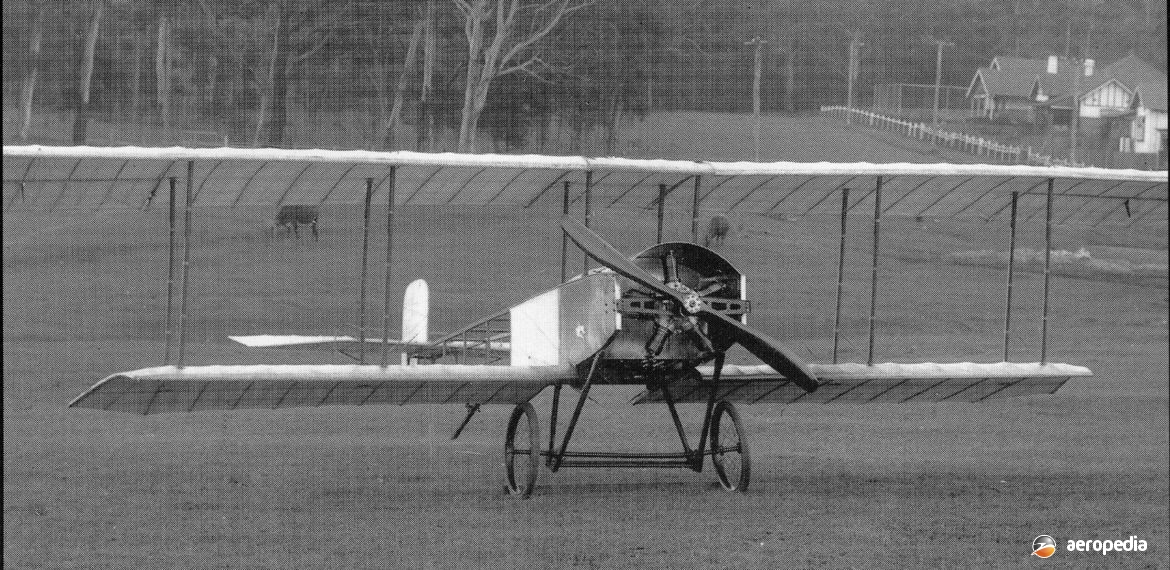Photograph:
The Jones Biplane after completion at Ryde, NSW (Frank Walters collection)
Country of origin:
Australia
Description:
Light biplane
Power Plant:
TBA
Specifications:
- TBA
History:
Leslie John Robert Jones was born on 4 June 1886 at Bathurst, NSW where he was educated, later moving to Sydney, NSW where he was apprenticed to Edge & Edge Ltd, a firm of electrical and mechanical engineers. In 1907, whilst working as a hospital X-ray operator, he became interested in aeronautics and commenced to design and build what ended up to be five aircraft, each of the five being a development of the previous design.
Leslie Jones initially worked in the backyard of his home at Glebe, a Sydney suburb, on the construction of a steam powered aircraft. Beginning in 1907 he designed and built an airframe and an engine for the aircraft, this being the first such project to be completed and successfully carried through to finality in Australia, but the machine never flew.
In 1911 he is reported to have converted his seven-cylinder rotary engine to a three-cylinder steam turbine engine for his second aircraft design. This machine when completed was taken to Eden Glassie, a property at Emu Plains west of Sydney where, on 20 May 1911, attempts were made to fly. It was described as a monoplane which weighed 227 kg (500 lb). The propeller was made from Australian white spotted gum. Some tests were carried out but during these the machine was wrecked in a storm. It did in fact eventually fly but not with the steam engine.
In 1911 he set about the construction of a third aircraft and this aircraft was lighter than the previous machine, being flown with a petrol engine. In 1913 he commenced work on his fourth design, this being a more conventional biplane and considered to be advanced for its time but it did not fly, its completion being interrupted in 1916 by Jones entering military service to serve in World War I. This biplane was fitted with a five-cylinder rotary engine.
In 1923 he commenced construction of an entry in the light aircraft competition that was to be held at Richmond, NSW in 1924. However, the aircraft was not completed in time for the competition. It was later completed by other builders and is believed to have flown at some stage.
His final aircraft was the Wonga (dealt with separately). It was built in 1927 and became the only one of his designs to be registered, becoming VH-ULZ (c/n 1).
The sixth aircraft Jones was involved in was the Centenary Racer built for the 1934 MacRobertson Miller England to Australia Air Race. It was not completed in time for the race and has also been dealt with separately.

